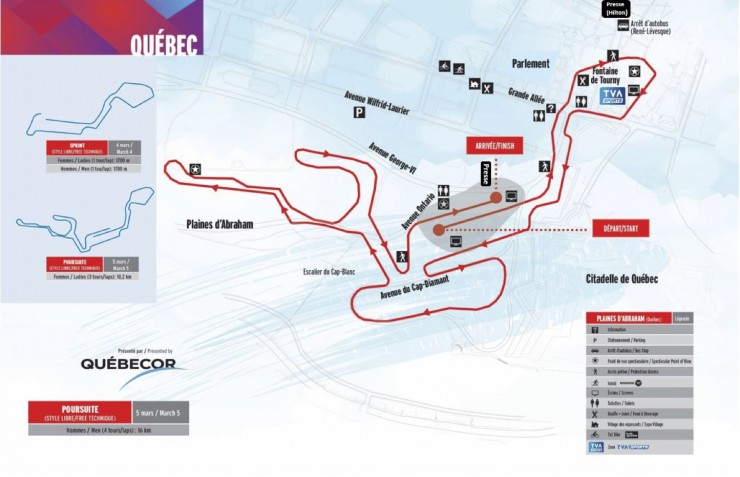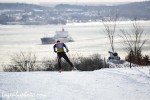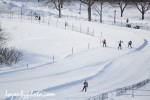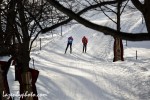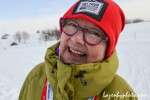QUEBEC CITY — The Plains of Abraham just outside the walls of Quebec City are best known for a major battle that changed the direction of North American history in 1759. On March 4 and 5, the Ski Tour Canada will reignite international rivalries on the same plains.
A recent 40 centimeters (16 inches) of snowfall means there is no shortage of snow. Race organizers are spending more effort digging out sidewalks and pathways than covering the course. Thursday’s training day was cold and windy, reaching -15 Celsius (5 Fahrenheit) in the afternoon, and only the Russians used the entire official training session. Temperatures are expected to warm up to -9 Celsius (16 Fahrenheit) for the freestyle sprint heats on Friday, which start at 3:30 p.m. Eastern time.
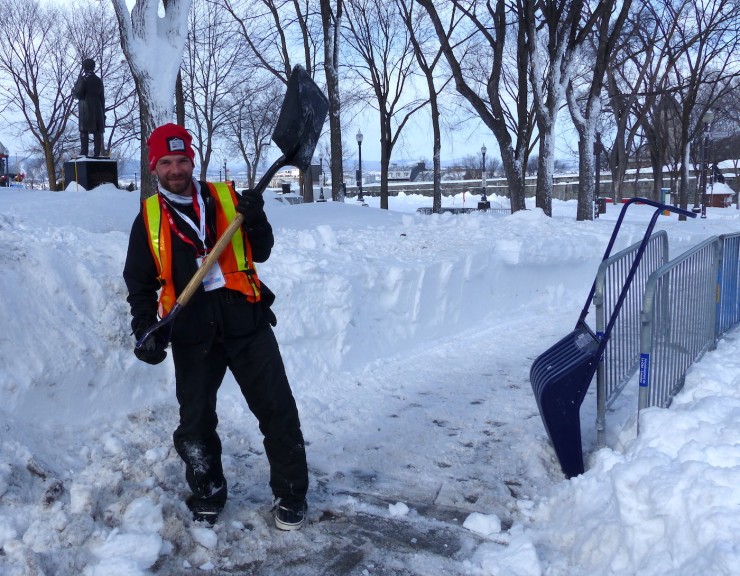
Saturday will be the 10/15 k freestyle pursuits, with the tour leader starting first. As with the Gatineau sprint, there are very few trees and little protection from the wind. The feel of the course will change dramatically with wind direction.
Despite the name, the plains are not entirely flat, with rolling hills on top of a cliff overlooking the St. Lawrence river. The sprint course (1.7 k for the men; 1.5 k for the women) is relatively flat, with a gentle climb out of the stadium, a long gentle descent to the city walls, and a gentle climb back before a steep-wall climb returns the racers to the stadium.
The women finish with a gentle descent followed by a wide-open corner into the finish straight. The men turn sharp left before the women’s final corner for a steep climb up and down a horseshoe, which will make the men’s race tactically very different.
“The last 500 meters of tomorrow’s sprint is going to be long and brutal,” Canadian World Cup Team and local racer Alex Harvey said at a press conference on Thursday. “As I get older, I’m a little slower in short sprints, but this is a longer sprint, so it should suit me better.”
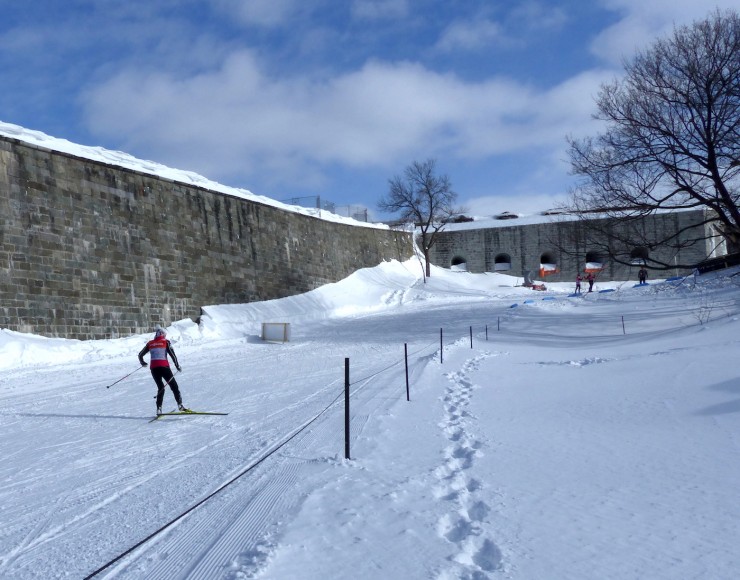
The steep climbs stayed firm on training day, but could easily turn to sugar by the end of the race day. The turn at the bottom of the course is easy enough in Zone 1, but it will likely be far more exciting in at race pace in in a group.
The pursuit course spends more time on the top of the exposed ridge with moderate climbs and great views of the river. Where the sprint course was almost entirely untransformed (squeaky) snow, the more exposed sections of the distance track were heavily transformed and very fast.
By the end of official training, one of the climbs was a mix of polished transformed snow and windblown squeaky drifts, with the fast line snaking back and forth across the trail. The longest distance course descent combined particularly fast snow with a strong tailwind, making the crashpads on the trees seem justified. The one tricky turn from the sprint course will be a bigger factor with the entire pack arriving together.
“Quebec is such a great venue to host a World Cup,” Harvey said. “There’s so much snow here, we never see that in Europe. We have some races in downtown in Europe, but trucks bring the snow, it’s dirty snow. Here it’s white everywhere, the course is great with fun bridges here and there. The European find it really surprising. They keep pointing at the Fleuve [St. Lawrence River] and asking if it’s a lake, a river! For many of them, it’s their first trip here.”
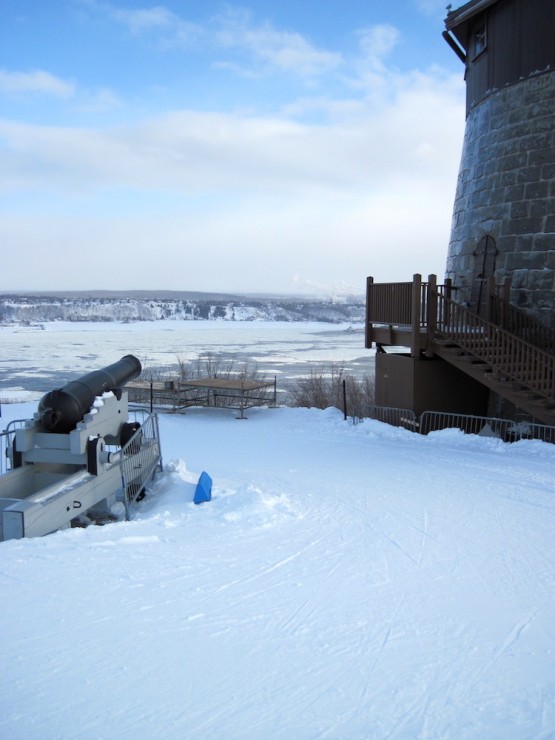
The old city of Quebec is one of the few remaining walled cities in North America and has a distinctly Quebecois culture. Greetings are uniformly in French, although most people will quickly switch to English.
The city is also known for its food. No visit is complete without a stop at the Chic Shack for their famous poutine, in the Musee du Fort, five minutes walk from the racecourse. Aux Anciens Canadiens, through the city gates and two blocks straight ahead, mixes traditional and modern food and encapsulates much of the local food history. As the weather is expected to remain cold, a good choice anywhere is the regional specialty soupe a l’oignon gratinee. Outsiders may know this as French onion soup.
On Thursday afternoon, the old city was filled with U.S.. family and friends, with nordic logos outnumbering the ‘normal’ tourists.
More from the press conference with Harvey (translated from French to English):
“This year’s sprints have been relatively shorter, at 1.3 to 1.4 kilometers, compared to [Friday’s] 1.7-kilometer sprint. Where the shorter sprints last a little over two minutes, this one will go over the three minutes mark. My endurance should enable me to keep pushing after the acid lactic build up, which usually kicks in at two minutes.”
(In English) “The natural terrain [on the plains of Abraham] is really hard, and then they added a little extra, little bridges, to make it harder. So this is going to be one of the toughest sprints of the whole circuit tomorrow, everyone agrees to that. It’s long, it’s hard, the last 500 meters is going to be just brutal.”
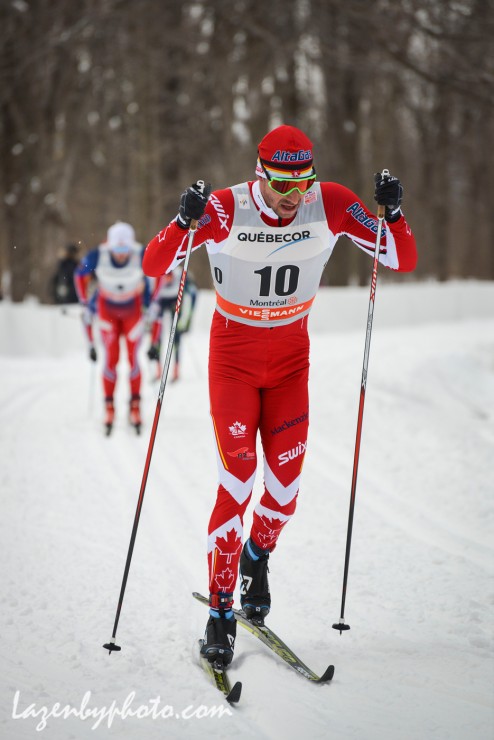
“I spent ten days training at altitude in Canmore in preparation for the second half of Ski Tour Canada, missing the last World Cup weekend in Finland. I’m really anxious to see the rewards in Canmore next week. The first six days of that altitude training were really frustrating. I felt really tired and weak during intervals session, which pissed me off! Altitude training is tough for everybody. I bet some guys will explode during the skiathlon in Canmore.” [Note: Canmore is at an elevation of 1,400 meters above sea level. Quebec City is at 100 meters.]
“My goal for [Friday’s] sprint is to qualify for the semis, which would give me a 30-second bonus overall.
“A top-five placement overall is still realistic, even the podium is not out of reach.”
FasterSkier: What differences, if any, do you see between the European Tour de Ski and the Ski Tour Canada?
AH: “The traveling is a big distance. The distances are really small in Europe. You can go from Italy, to Germany, to Switzerland easily and in no time. Here, we have to take a plane to Canmore. The logistics of the Ski Tour Canada are much more complex. That was probably our biggest challenge up to that point. The jet lag is another factor. I did the trip from Montreal to Calgary several times in the past, so I’m used to it. Other Canadians did so as well, so it should play to our advantage.”
— François Léger Dionne contributed reporting
